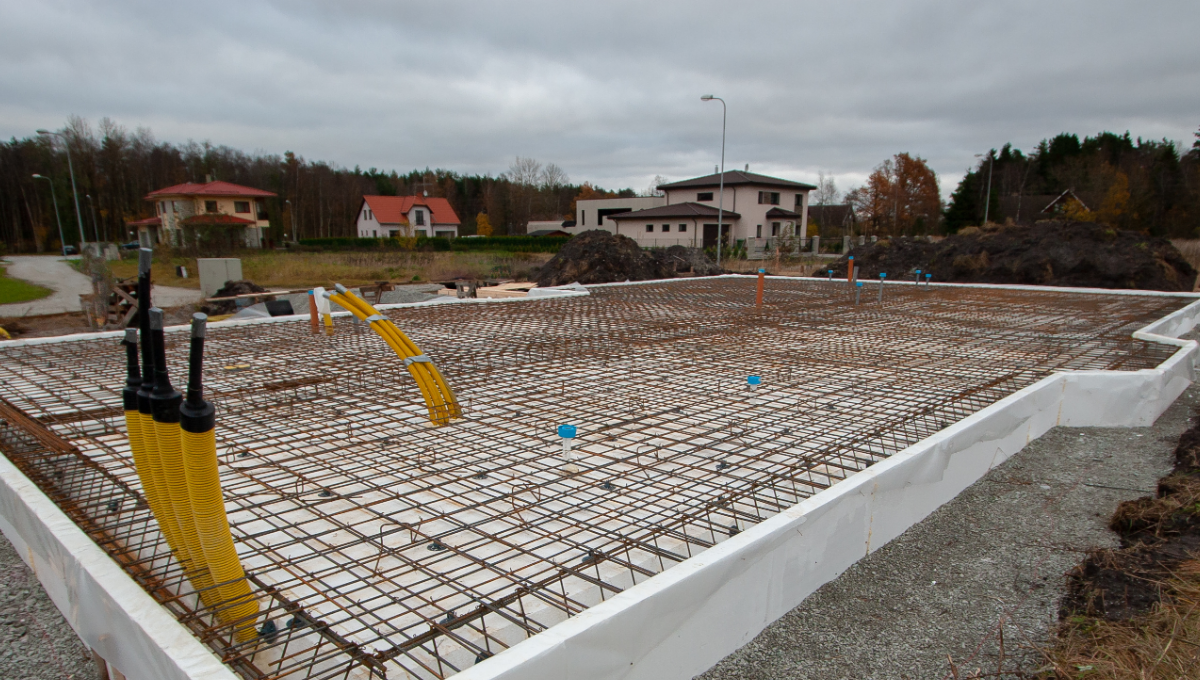The plinth beam in construction is a crucial factor that holds the building together in the past, present, and future. They distribute the weight equally to the foundation and make the building stand upright.
This blog helps you to understand one of the important pillars of construction called the plinth beam.
Plinth Beam Construction
A plinth beam is a reinforcement concrete beam that acts as a bridge between the foundation and the wall. Once the foundation becomes strong, the plinth beam is laid to avoid any cracks or damage from the foundation to the walls. The load of the wall is uniformly distributed to the wall due to the plinth beam.
Minimum Dimensions of Plinth Beam

M2O is the least concrete grade that is present in plinth beams. In case the mixture is blended using labour, then ten per cent of cement should be added to the mixture. The depth of the beam should contain a minimum diameter of 200 mm. This must span the entire width of the foundation’s top course.
At the bottom, the plinth beam contains two 12 mm-diameter bars. In addition to it, another two 10 mm diameters bars are placed above. Stirrups are placed at a distance of 150 mm and have a minimum diameter of 6 mm.
The plinth beam shutter should be placed firmly and tightly sealed before pouring the concrete. The reinforcement is covered with a 25-mm concrete layer and sealed compactly. The plinth beam is now ready and protects the building.
Type of Plinth Beam
There are different types of plinth beams used in construction depending on the purpose and design. The types of plinth beams include:
Plain Plinth Beam
Plain plinth beam Design is one of the common types of plinth beam used in construction. It has a basic design that can be used when there is stable soil and requires light loads.
Reinforced Concrete Plinth Beam
Reinforced concrete plinth beams are used in construction that requires heavy load capacity and strength. The spell behind the strength is that the beam is mixed with concrete and reinfocement, which helps to bear heavier loads. They provide strength and support to modern buildings.
Cantilevered Plinth Beam
When the exterior walls expand above the beams of the foundation, a cantilevered plinth beam is used. This type of beam can be used in balconies and verandas and to support a part of a building that is overhanging.
Importance of Plinth Beams in Construction
The plinth beam is crucial in construction as it gives support to sub-columns by spreading their weight to the ground. The plinth beam helps to strengthen the foundation. Additionally, the plinth beam traps soil settlements by absorbing soil movements and maintains the building structure.
The plinth beam protects the building from seismic shocks and protects the buildings during earthquakes. This absorbs the horizontal stress and provides firmness in the building during earthquakes.
How Can a Plinth Beam Strengthen a Construction?
Increased Load Distribution
The plinth beam takes in the stress and distributes it throughout the foundation. The plinth beam spreads this stress uniformly and protects the building from any cracks or bends. When there is uneven support resting on a side of a building, the plinth beam can withstand the extra weight and stabilise the building weight.
Moisture Protection
The plinth beams are built above the ground level and encompass a damp-proof course (DPC) sometimes. It is a waterproof layer that is kept above the beam. The DPC traps the water from rising to the ground and entering the walls. This protects against any moulds, dampness, or deterioration of the buildings.
Reduced Cracking
The existing cracks or upcoming cracks can be prevented as the plinth beam balances the stress. Moreover, plinth beams like reinforced beams will absorb certain vibrations and withstand further risks.
Disadvantages of Avoiding Plinth Beams in Construction
There are certain disadvantages due to the lack of plinth beams in construction. The disadvantages include:
Uneven Weight Distribution
The lack of a plinth beam will result in uneven weight distribution in the foundation. This affects the settling of uneven parts and the sinking of the foundation. It later develops cracks in floors, windows, doors, and structures.
Stability Reduction
When a plinth beam goes missing, the binding of walls loses its composition and is easily susceptible to strong winds and earthquakes. This leads to exponential growth in cracks and collapse of buildings.
Problem in Dampness
Plinth beams prevent the building from drenching from water by reducing the rise of water levels. As there will be no barrier to stop the water level, the building will be affected by mould, leading to damage to materials in buildings.
Conclusion
Plinth beams play a vital role in maintaining the structure of the building. They are important because they spread the weight over the foundation, act as a bridge between the superstructure and foundation, withstand earthquakes, reduce cracks, and present potential collapse of buildings.
FAQs
The plinth beam links the wall and foundation by preventing cracks or any expansion in the building.
The plinth beam is placed between the foundation and the wall.
The general size of a plinth beam is nine inches in width. But it may change depending on the floor structure.

